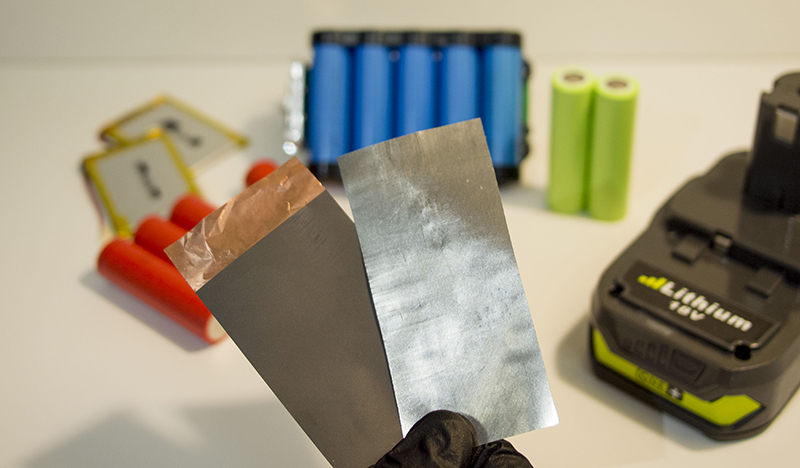Researchers in the Cockrell School of Engineering at The University of Texas at Austin have discovered a family of anode materials that can double the charge capacity of lithium-ion battery anodes — a breakthrough that opens the door to cheaper, smaller and lighter batteries in the future.
 In lithium-ion batteries, energy is stored by shuttling lithium between two electrodes that are made of conductive materials, which generate the electric current that makes batteries function. Novel electrode materials promise significant performance improvements and have been the focus of extensive scientific and energy research for decades. However, many efforts to improve lithium-ion battery electrodes have focused on building new nanomaterials atom by atom, a process that scales up inefficiently and prevents commercial viability.
In lithium-ion batteries, energy is stored by shuttling lithium between two electrodes that are made of conductive materials, which generate the electric current that makes batteries function. Novel electrode materials promise significant performance improvements and have been the focus of extensive scientific and energy research for decades. However, many efforts to improve lithium-ion battery electrodes have focused on building new nanomaterials atom by atom, a process that scales up inefficiently and prevents commercial viability.
To combat this, a team of Cockrell School materials scientists led by Arumugam Manthiram, mechanical engineering professor and director of the Texas Materials Institute, has developed a new class of anode materials using a top-down production process in which eutectic metal alloys are mechanically rolled into nanostructured metal foils.
The new family of anode materials, which Manthiram has dubbed the Interdigitated Eutectic Alloy (IdEA) anode, saves time and materials, producing an anode using only two simple steps instead of the multiple steps traditionally required to mass-produce lithium-ion battery anodes. It also has twice the charge storage capacity of a typical lithium-ion battery anode.
“It is exciting to have developed an inexpensive, scalable process for making electrode nanomaterials,” Manthiram said. “Our results show that the material succeeds very well on the performance metrics needed to make a commercially viable advance in lithium-ion batteries.”
The team, which includes postdoctoral fellow Karl Kreder and materials science and engineering graduate student Brian Heligman, created a foil material that is one-quarter of the thickness and half of the weight of the graphite and copper anodes used in virtually all lithium-ion batteries today. As a result, a smaller, lighter rechargeable battery could be made with the new anode and used in everything from cellphones to large-scale energy storage systems. The research was published last month in the journal ACS Energy Letters.
Since the 1990s, the primary anode for mass-produced rechargeable lithium-ion batteries has been a graphite powder coated on a copper foil. The copper adds bulk to an electrode without improving the battery’s power, and the anode requires a laborious, fastidious manufacturing process. By omitting the complicated slurry coating process, the manufacturing of the IdEA anode is drastically simplified.
Kreder, the lead author on the study, realized that a micrometer-scale alloy anode could be transformed into a nanomaterial using traditional metallurgical alloying processes.
“The eutectic microstructure forms naturally because of thermodynamics,” Kreder said. “Then, you can reduce the microstructure by rolling it, which is an extraordinarily cheap step to convert a microstructure into a nanostructure.”
The team’s resulting anodes occupy significantly less space, overcoming a critical barrier to commercializing better batteries for use in portable electronic devices like cellphones and medical devices, as well as larger applications like electric cars.
Future research in Manthiram’s laboratory will focus on streamlining the production process for developing the tin-aluminum anode, as well as investigating anodes made from alloys with even better battery performance capabilities.
“The IdEA anode is not just a single material, but rather represents a new framework for designing high-energy-density alloying anodes,” Kreder said. “There are at least 10 other novel binary systems that we know of, and we will continue to investigate.”
This research was funded by a grant from the U.S. Department of Energy’s Office of Basic Energy Sciences, Division of Materials Sciences and Engineering.







